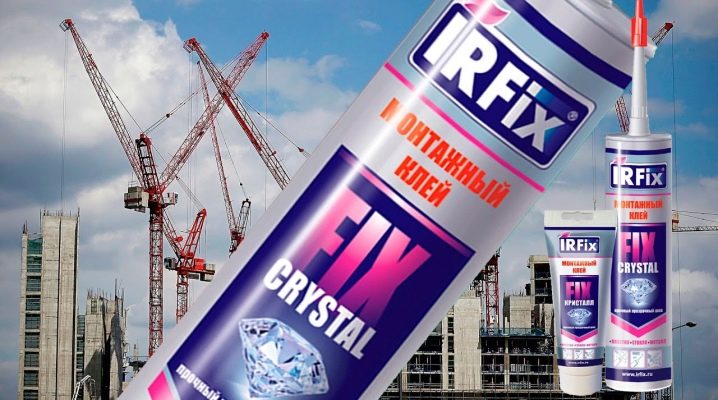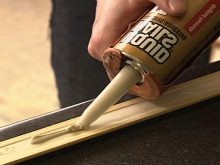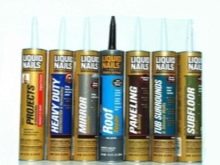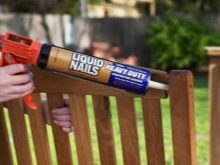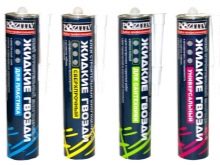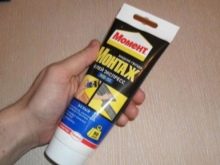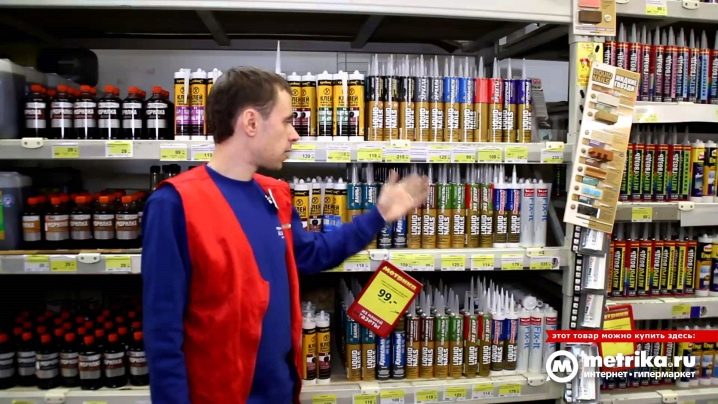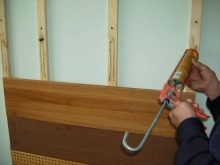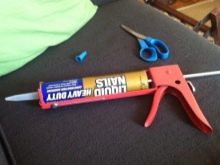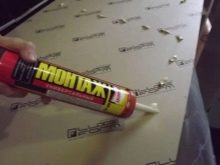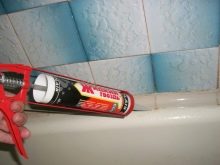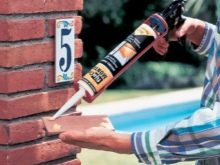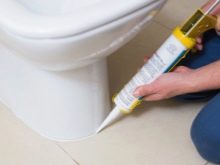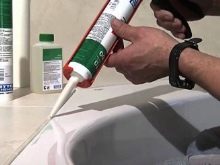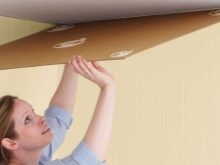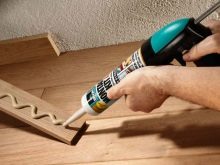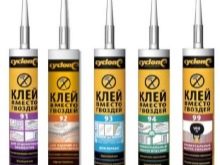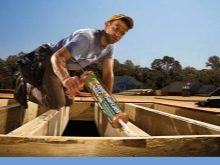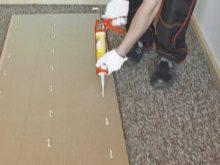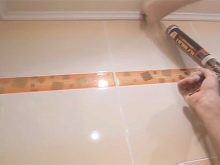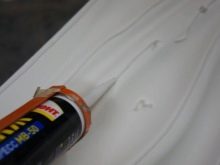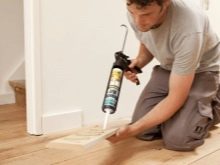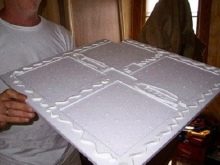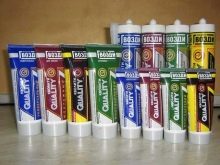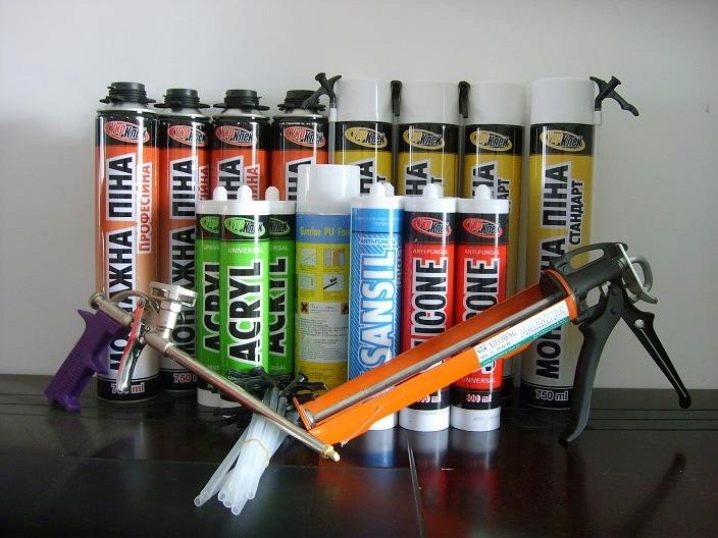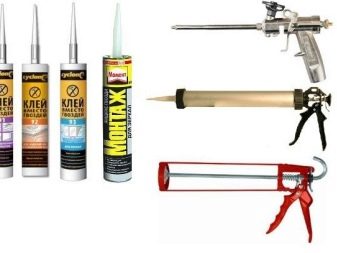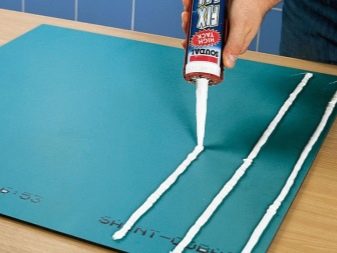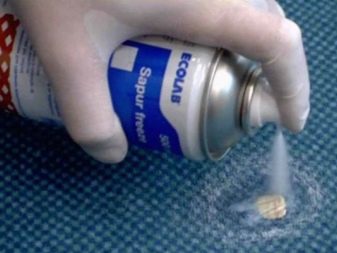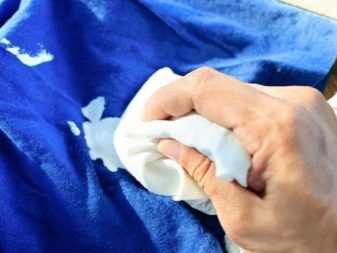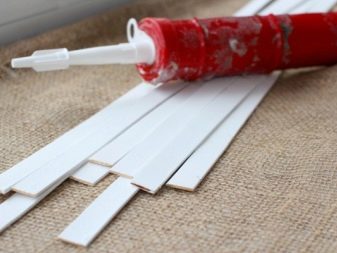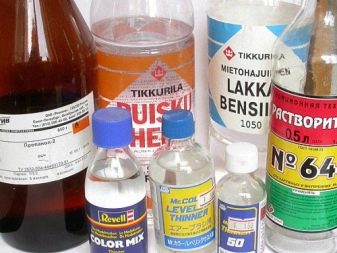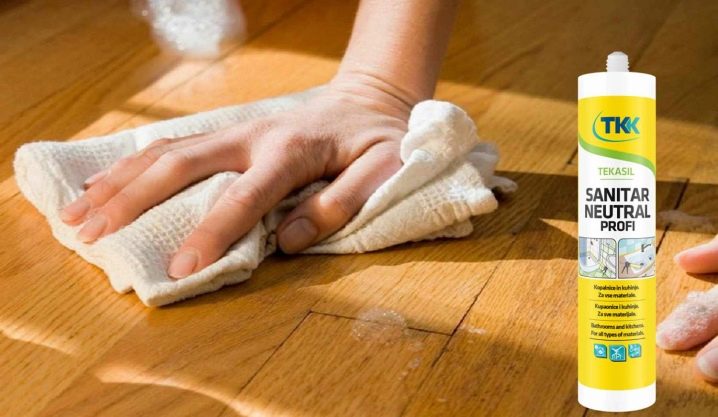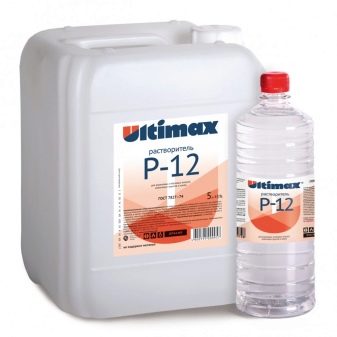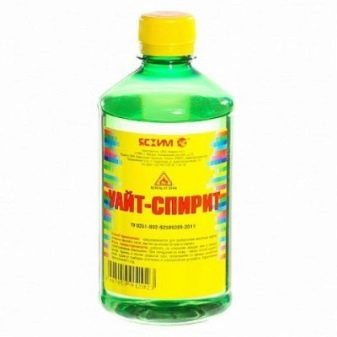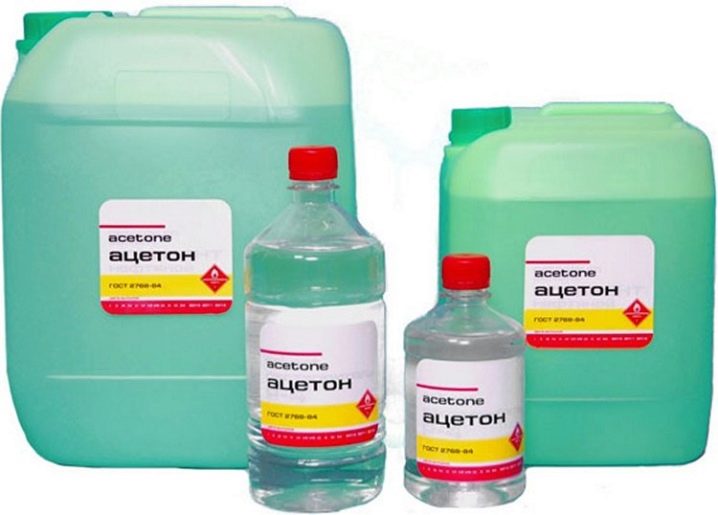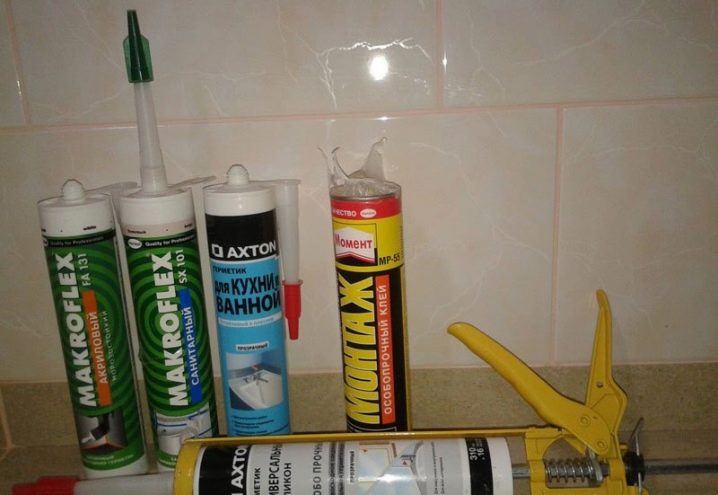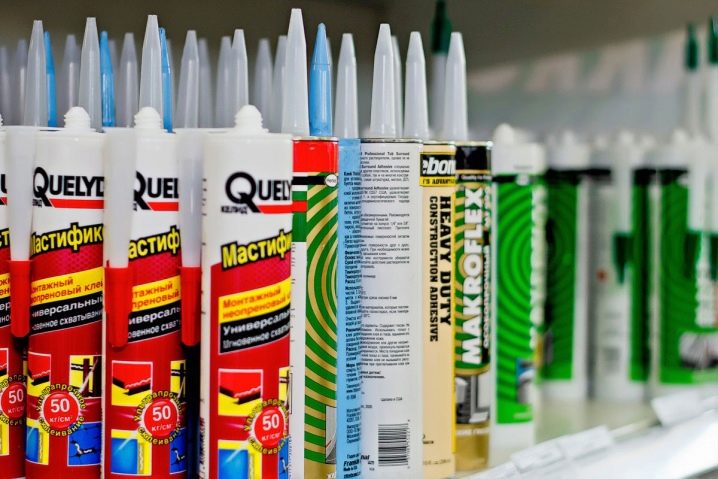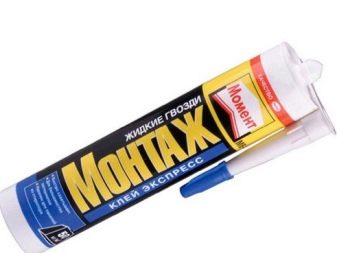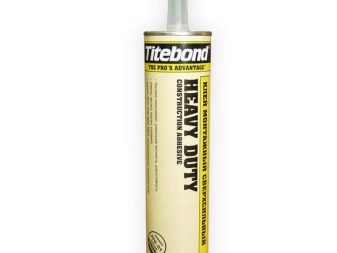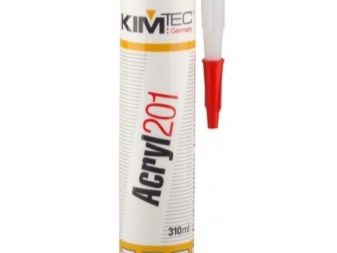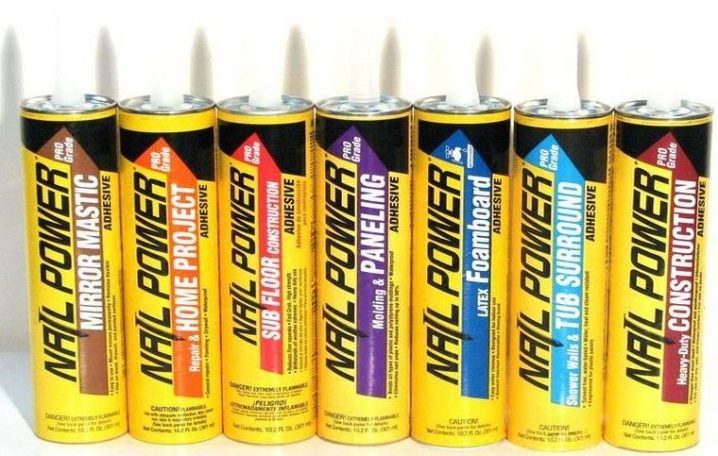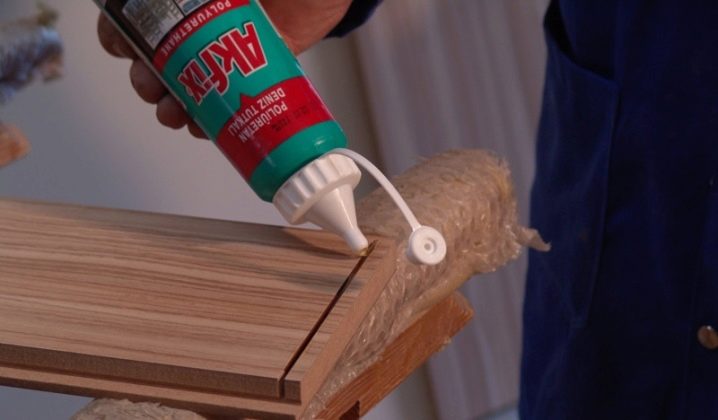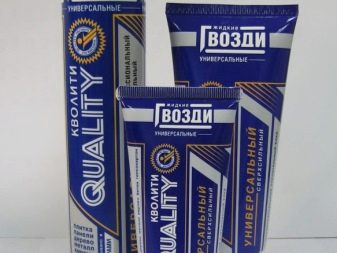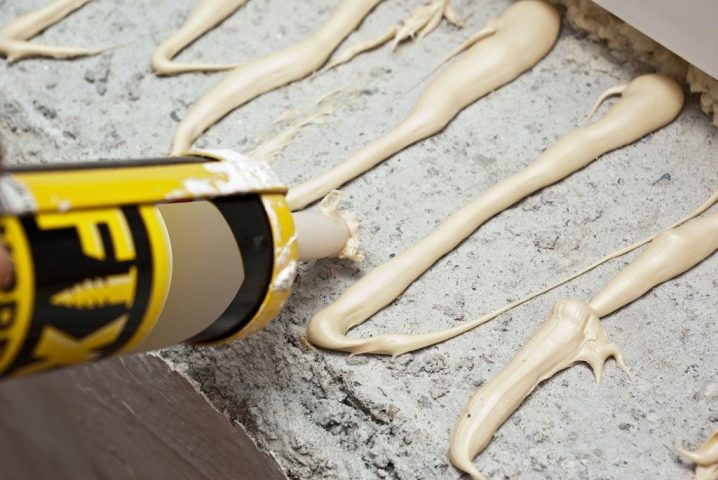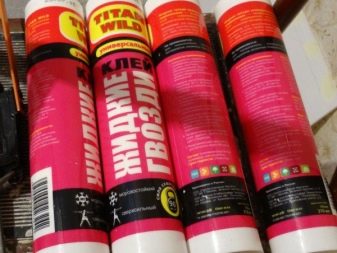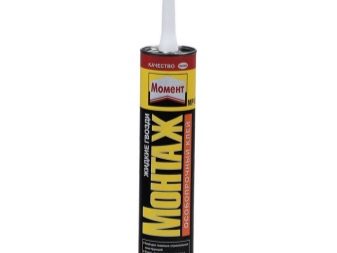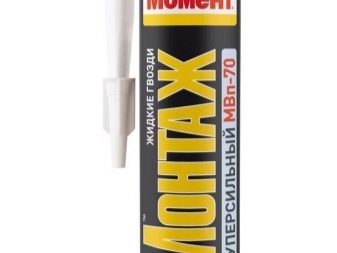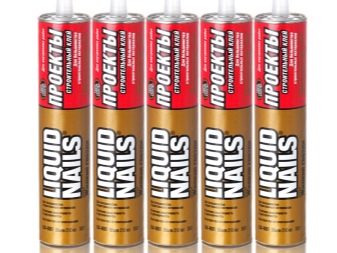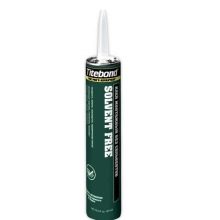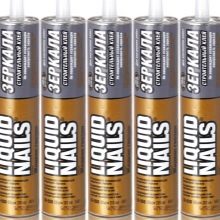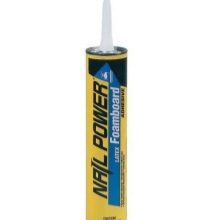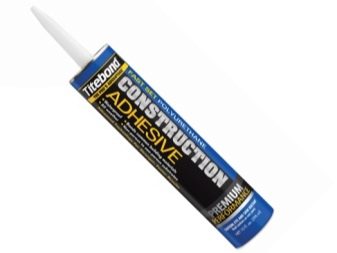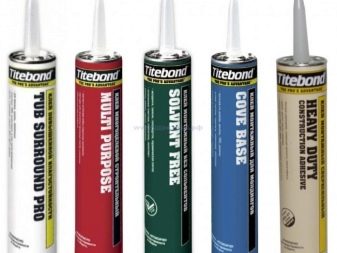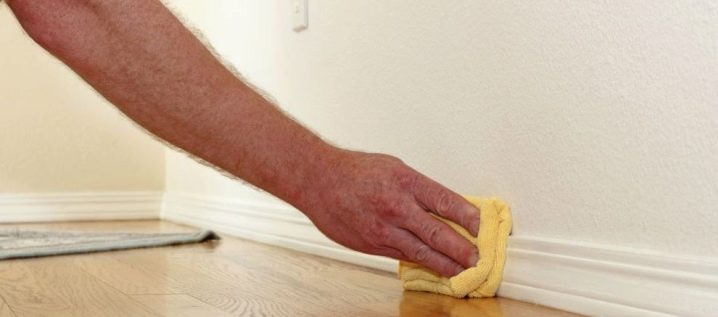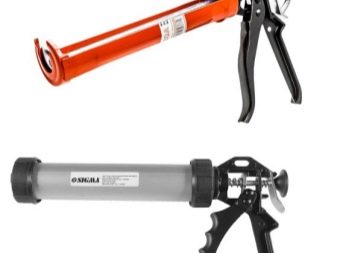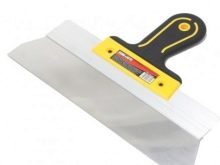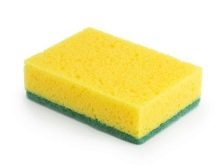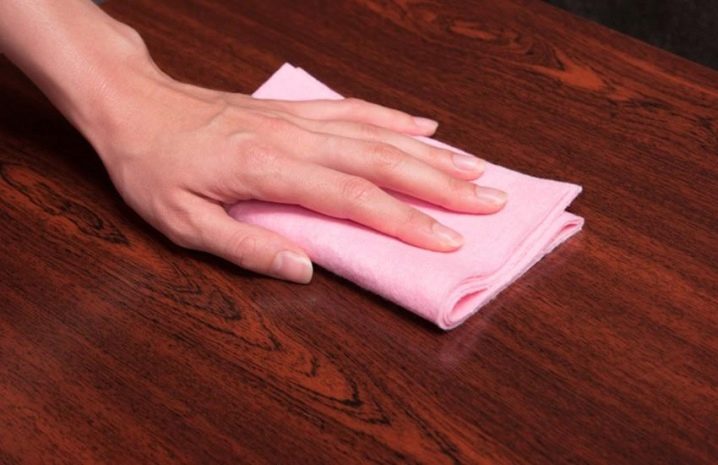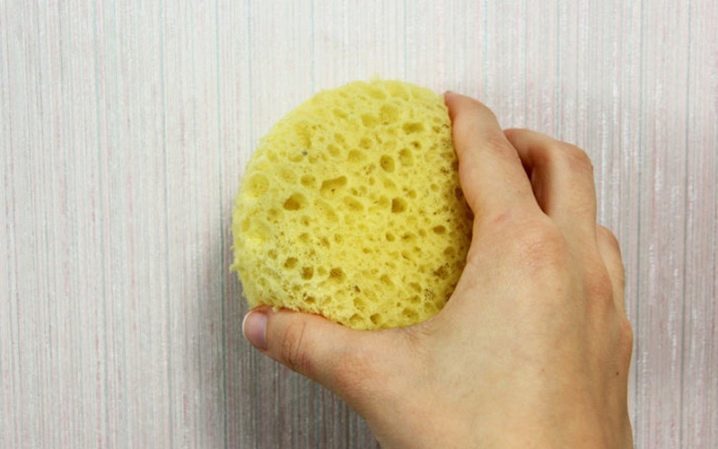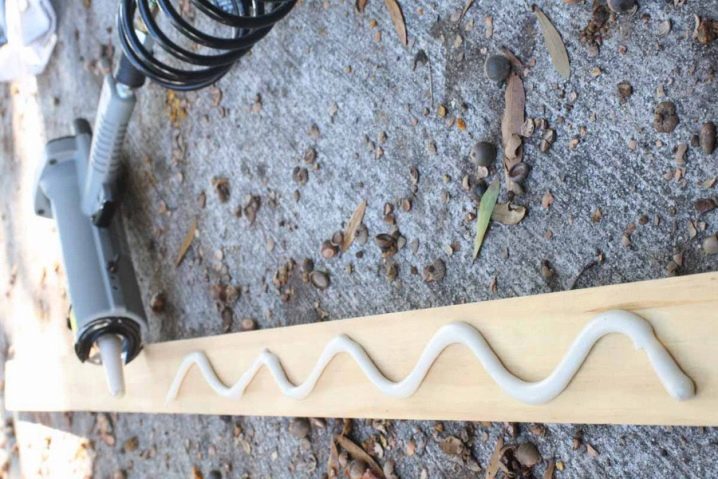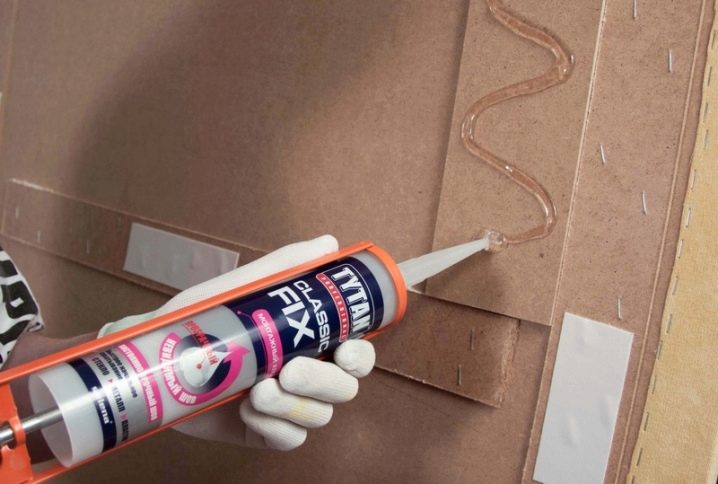"Liquid nails": which is better to choose and how to use them?
“Liquid nails” is a mounting tool, invented in the USA in the middle of the twentieth century on the basis of ordinary glue. Special clay was used as a binder; synthetic rubber, neoprene, became the solvent. “Liquid nails” quickly found a customer response because of their extraordinary qualities, which previously could not be achieved with fastening means without the use of breakdown fixation: nails, screws, etc. Over time, heavy toxic substances were removed from the composition: toluene and acetone.
What it is?
At the moment, “liquid nails”, created according to a special recipe, are sold on the building materials market:
- a special type of Texas clay - has a high plasticity, provides a very powerful bonding of working surfaces;
- synthetic rubber - has some toxicity, enhances the adhesion and strength of the composition;
- polymeric compounds - give additional qualities in different variations;
- titanium oxide, dye.
In addition to the original recipe, there is an alternative version of the "liquid nails":
- chalk - the main binder, replaces clay, but is inferior to it in strength, gives the composition a beautiful white color;
- aqueous emulsion solvent;
- synthetic additives.
Acetone and toluene are present in low-quality versions of “liquid nails”, they reduce the price of the product, but make the use of the composition hazardous to health.
Purpose
The main function of “liquid nails” is the connection of 2 or more planes or other objects among themselves; they can also be used instead of sealant, although they are inferior to similar tools in quality characteristics. Bond strength can reach 80 kg / sq. cm, while liquid nails are able to adhere even loosely adjacent surfaces, creating a strong connection layer between the parts.
They are used for the installation of various materials, including:
- brick construction;
- drywall sheets;
- glass, mirror and ceramic surfaces;
- cork, wood and its derivatives: MDF, OSB, particleboard, MDF, etc.
- polymeric materials: polystyrene, plastic, etc.
- metal surfaces: aluminum, steel.
In this case, the scope affects:
- residential and non-residential premises, for residential it is better to use compositions without neoprene;
- rooms with low and high humidity: bathrooms, kitchens, etc.
- window constructions;
- minor repairs to the finishes: fallen panels and tiles on “liquid nails” hold on stronger than on standard tools, but the high price makes their large-scale use in this area unprofitable;
- installation of heavy finishing materials, such as bamboo wallpaper.
It is undesirable to use liquid nails for fastening structures from damp wood. Also, such waterproof "nails" are suitable for almost any flooring, for example, tiles.
Types and characteristics
"Liquid nails" are produced by two main technologies. In the first embodiment, the binder is clay, in the second - chalk, in addition, the compositions are divided according to the specifics of the application, depending on the presence of synthetic additives that provide additional protective properties.
Transparent heat-resistant liquid nails can sometimes be beige in accordance with GOST. Their technical characteristics allow it.
The extraordinary positive features of liquid nails with the almost complete absence of flaws distinguish them from other representatives of the mounting segment of the building materials market.
Characteristic features include:
- tremendous strength of adhesion of working surfaces, enduring an enormous load - 80-100 kg / sq. cm;
- the possibility of effective use of tools for almost all types of surfaces;
- the form of release in the tube provides a simple and convenient work with the composition;
- the solution can connect loosely adjacent surfaces, which is inaccessible to other liquid substances, the shape of the surface also does not play a negative role;
- does not violate the integrity of the materials being connected, such as breakdown mounting tools: nails, dowels, screws, screws and others that can match the strength of fastening;
- the frozen layer is not destroyed by sluggish processes, for example, corrosion, as metal counterparts, or rotting;
- installation work is distinguished by silence, lack of dirt and dust;
- setting speed is several minutes, complete drying ranges from several hours to days depending on the components of a particular type;
- manufacturers of quality "liquid nails" do not use toxic components; neoprene has some toxicity, but significantly enhances the properties of the composition and is an exception to this rule;
- complete incombustibility of the frozen layer, the composition does not smolder and does not ignite, does not emit toxic substances when heated;
- high moisture and frost resistance in species with a neoprene solvent, in water-emulsion ones - weak;
- there is no sharp unpleasant smell, although some species may smell slightly in a certain way;
- low consumption - an average of one drop of “liquid nails” is used to fix 50 kg of weight.
When using the tool according to the specifics of their subtype, there are no practical flaws.
In addition to the classic "liquid nails" based on clay, many manufacturers produce an alternative version that uses chalk as a binder.
There are two main types with their inherent features:
- on the basis of clay - the original compositions are distinguished by high strength and plasticity;
- on the basis of chalk - less durable than clay, have a pleasant white color.
The solvent used to dissolve the components also plays an important role for the performance qualities of the composition.
There are two main types.
Neoprene (on synthetic rubber)
For such a composition is typical:
- high bonding strength for various types of surfaces, including metal;
- not suitable for work with some polymeric materials: acrylic, plastic, etc .;
- high moisture resistance;
- resistance to temperature fluctuations;
- frost resistance;
- quick setting and a relatively short period of complete drying;
- low toxicity and pungent odor; during work, ventilation of the room and protective equipment are required: mask and gloves. The smell disappears in a couple of days.
On a water-based acrylic base
Such compositions are characterized by less adhesion, but they are completely non-toxic, and there are no unpleasant odors.
They are also peculiar to:
- good adhesion with polymeric and porous materials;
- poor resistance to temperature fluctuations;
- low frost resistance;
- high vulnerability to the cooling-heating cycle;
- weak moisture resistance - they are extremely not recommended for work in bathrooms and even kitchens.
In addition to the main components - a binder and a solvent, various synthetic additives are part of the “liquid nails”. They enhance certain protective qualities of the composition, thereby expanding the scope of its application in a specific environment.
There are two main types of "liquid nails":
Universal
Can be used under various conditions, while the protective properties of the composition are moderate and with pronounced negative factors, its effectiveness begins to decrease sharply.
Specialized
Such compositions are designed for use in specific conditions, where they show their qualities in the best way.
Divided into many subspecies with characteristic properties, including:
- for work in internal rooms and on the street;
- for dry rooms and moisture resistant formulations;
- for mounting heavy objects;
- composition with enhanced strength;
- with accelerated solidification;
- for work on glass, mirror and ceramic surfaces;
- composition for work on polymer surfaces and other.
In this case, one composition can combine several specific features, for example, a composition for mounting heavy objects with accelerated hardening for rooms with high humidity, etc.The purpose of the composition - one of the main criteria for the selection of a specific brand for solving urgent problems.
Manufacturers Overview
On the building materials market there is a fairly large number of brands that produce “liquid nails”. The main properties of the composition are determined by its components, however, the quality of the raw materials used for their creation and production technology also affect the characteristics of the final product. Installation work is a matter of high responsibility, where low-quality goods can not only spoil the result, but also entail more serious consequences. In order not to get into a similar situation, it is better to use liquid nails from proven brands that have gained popularity for product quality, and not its low cost.
Henkel - German concern with an impeccable reputation, one of the manufacturers of building materials of the highest quality. It produces liquid nails under the brands “Moment Installation” and “Makroflex” with different specificity of application: universal and specialized, among which are compositions for expanded polystyrene, wood, high-strength metal, mounting plinth and other needs, the composition “Moment Installation Superstrong Plus” withstands load up to 100 kg / sq. cm.
Franklin - American firm producing liquid nails on the basis of the original technology, sells products under the brand Titebond. Differs in the strengthened durability and a wide choice of structures with various specifics.
Kim tec - German manufacturer of liquid nails with different specifics of application: moisture-proof, versatile, extremely durable, decorative compositions.
Selena group - Polish company, the products are sold under the brand name Titan. High-quality results are provided by European technologies at an affordable price. Responses products of this company has generally positive.
How to choose?
With an extensive choice of "liquid nails" with different performance properties, produced by different companies, the question of the proper selection of mounting tools that can solve a specific problem is raised. To this end, it is necessary to take into account the criteria that “liquid nails” meet in order of importance.
Purpose
Any "liquid nails" have a certain specificity, which is indicated on the product label and expires from the components of the composition. This moment is decisive, because if you buy expensive “liquid nails” from the best manufacturer,which are designed for a dry room, and you can not even think about a good result in using their bathroom - the composition will fall off much earlier than scheduled.
Manufacturer
After determining the appropriate type of destination you need to think about the manufacturer. Companies with a reliable reputation, whose product is time-tested, deserve the closest attention.
The secondary criteria, which may also be taken into account in the selection process, include several materials.
- Clay or chalk. The clay composition is much stronger, if necessary, fixing objects of significant mass on this issue two opinions can not be - only clay. If the work is carried out with polymeric materials, it is better to take the chalk composition, the solvent for which is a water-emulsion solution.
- Setting time and final drying. This parameter comes to the fore when attaching objects to a wall or ceiling, when support of the object is necessary until it is fully bonded to the surface. In such a case, if a heavy object is mounted, the setting time is not enough, you will have to do a backup, otherwise the surfaces will likely diverge even before the glue has completely dried out.
- Toxic ingredients. The presence of toluene and acetone indicates a dishonest manufacturer. These substances are characterized by high toxicity and it is necessary to work with them extremely carefully. Neoprene or synthetic rubber has a slight toxicity, but significantly enhances the strength of the composition, its use must be accompanied by individual means of protection and ventilation of the room.
Despite the presence of instructions accompanying the cylinder, and the presence of sales assistants in the building markets, the first does not always indicate all the application options, and the second ones do not necessarily have the necessary information for each possible situation. We offer a set of solutions for those who have just started using “liquid nails”.
As a universal installation tool "Extra Strong Moment Installation" by HenkelThe tool is used to fix massive objects when working with stone, wood, including hardboard, OSB and similar materials, metal surfaces. The tool is of high quality and 100% result.
For work with vinyl polymers such as polystyrene is well suited "Super Strength Moment Installation" on a water based basis.However, its use on Teflon or a polymer compound such as polyethylene will be ineffective.
Suitable for internal finishing and assembly work “LN601” by Macco. These “liquid nails” based on synthetic rubber show an excellent result when joining natural wood surfaces, chipboard of various types, metal and plastic objects. The weak side of the composition is the inability to glue together ceramic and mirror surfaces. When working with "LN601" it is necessary to use protective agents, as with all formulations on a neoprene solvent.
An alternative installation tool for interior decoration is Titebond Multi-Purpose. Also belongs to the group of "liquid nails" that use neoprene as a solvent, therefore, it is necessary to work with it using the protection of hands and the respiratory tract. It copes well with surfaces made of metal, plastic, natural wood, chipboard and fiber plates, ceramic surfaces. Powerful adhesive properties provide reliable installation on brick and concrete pavements of objects and finishes of virtually any mass.The composition is not suitable for polymeric vinyl-like materials, for example, polystyrene, and in places of direct contact with water, for example, in swimming pools or aquariums.
For ceramic surfaces are like "Titan WB-50" and "Solvent Free" based on aqueous emulsion solvents with an accelerated drying period. These compounds are characterized by good moisture resistance and resistance to moderate vibration.
For work with mirror surfaces is better to choose "LN-930" and "Zigger 93". The peculiarity of their composition - in the absence of destructive components, amalgam - mirror coating.
High humidity areas, such as a bathroom or kitchen, require formulations that are characterized by powerful waterproofing properties, such as "Nail Power" and "Tub Surround".
For installation of baseboards, moldings, trim and other similar elements is better to use "Tigger construction adhesive" and "Solvent Free". They are distinguished by a high setting speed, which not only makes the work convenient, but also contributes to the precise preservation of the position of the attached finishing element.
For the attachment of massive objects are highly specialized compositions "Heavy Duty", "LN 901" and "Zigger 99".
These recommendations are an example of the choice of the listed compounds for certain situations and notlimit their use in other areas.
Recommendations for use
The method of working with liquid nails is not particularly difficult, however, in this matter it is necessary to adhere to the correct course of action in order to achieve an optimal result with the lowest cost.
The whole process is quite simple and in many respects this is provided by a convenient form of release: the finished solution is packed in tubes, from which you only need to squeeze the composition onto the working surface.
Do it correctly as follows.
- Worktop preparation. Before applying the "liquid nails" the surface must be cleaned of small debris, and then treated with a degreaser.
- On the prepared surface “liquid nails” are applied pointwise, and if you need to attach a massive object, then a snake. It is more convenient to squeeze the mixture out of the tube with a special pistol.
- After applying the composition, the surface is tightly pressed against the one with which it is glued. In this position, the objects need to hold for a few minutes until the composition grabs. If the massive part is attached by weight, then it is necessary to ensure fixation until complete drying.At the setting stage, it is possible to change the location of the object, after final hardening - no longer.
A special gun is designed to optimize work with a tube of glue. Outwardly, it resembles a syringe, a cylinder is inserted inside. A special mechanism helps to squeeze the solution onto the working surface. The gun itself is designed as simple as possible, and its principle of operation is intuitive. Products are of two types: frame and sheet. The first ones are more reliable and fix the tube tightly. Also, the design of the gun can have a reverse function. It makes it easy for people to use without much construction experience.
In case of its absence, it is necessary to understand in advance the distribution of the entire volume of the balloon in a short period.
When working with "liquid nails" there are situations in which you need to clean certain surfaces, soiled with the composition.
In this case, the following tools will be needed for cleaning:
- solvent;
- special cleaner;
- water;
- sponge;
- scraper.
Depending on the time that has elapsed since the “liquid nails” hit the surface, there are various situations.
- Spots formed shortly before their detection, that is, from a composition that has not yet dried, are easily cleaned with warm water, to which a few drops of organic solvent are added. This solution can be used to clean almost any surface due to its high efficiency and safety for the material.
- In the case when it took a long time for the composition to harden, more serious measures of impact will be required. In the construction market for sale a special substance intended for cleaning "liquid nails". Before working with a cleaner containing aggressive ingredients, you must always wear gloves. Pouring some amount of cleaner into the container, a sponge is dipped there, after which it is applied to the soiled area and held for about 15-30 seconds. Then the sponge retracts and begins neat and unhurried, so as not to spoil the material, the treatment of the stain with a scraper. Squeezing the sponge to squeeze out the cleaner is not recommended at all - it is possible that drops of the compound get into the eyes.
An additional cleaning step is based on the vulnerability of “liquid nails” to ultraviolet radiation. One spot of sunshine will not remove, but before treating a stained surface with a cleaner it can be placed under direct sunlight for several hours. Such an impact will weaken the strength of the stain and facilitate the further process. Over time, the cleaning is performed according to the procedure described above.
Scrubbing or washing “liquid nails” at home is difficult. It is best to dissolve the composition of a special tool, then it is easy to remove.
How much dry?
The transition time from one state to the next varies depending on the brand.
On average, we can distinguish the following indicators:
- the transition from a completely liquid to the initial setting: from 2-5 minutes for compositions with an accelerated hardening, up to 20-30 for standard options;
- full hardening period occurs in the interval from 12 to 24 hours after the application of the composition;
- the final polymerization of the composition is achieved after about 6-7 days.
Tips
- Compounds using synthetic rubber as a solvent should be used only in protective equipment: masks and gloves, and preferably in glasses.
- Neoprene-based “liquid nails” should be stored in a cool place with low humidity.
- Polyurethane compounds poorly adhere to teflon and polyethylene surface types.
- When installing massive objects on weight to the wall or ceiling, it is necessary to construct a structure that looks like a support for the period of complete drying of the composition.
How to fill and use a gun for "liquid nails", see the following video.
